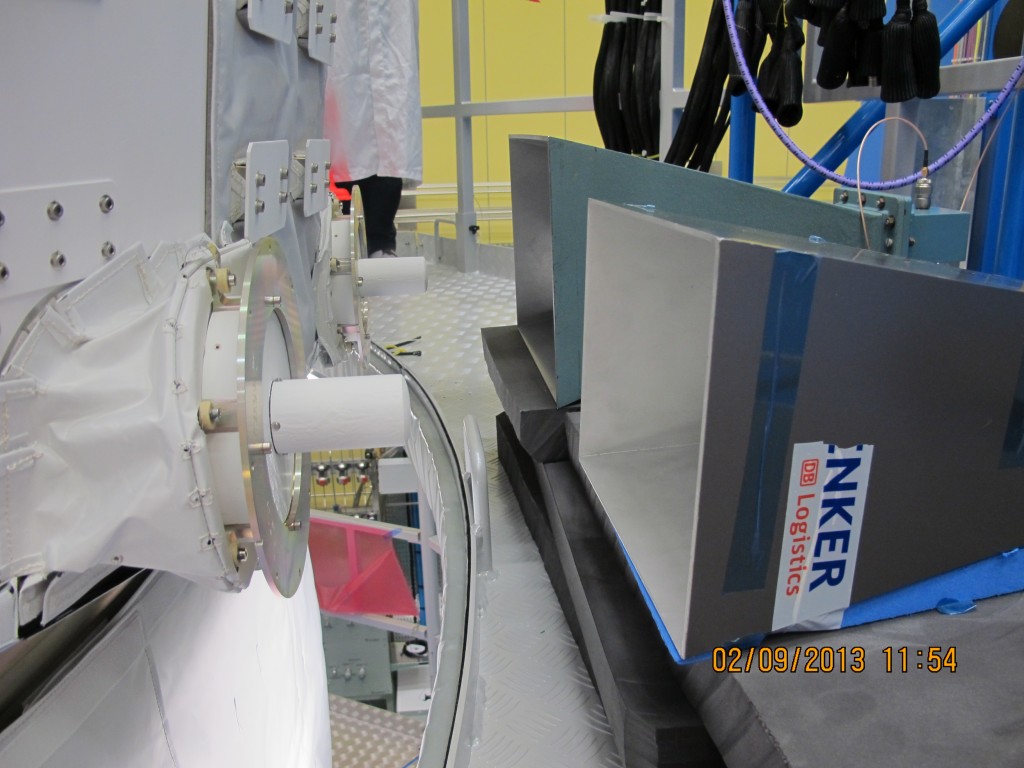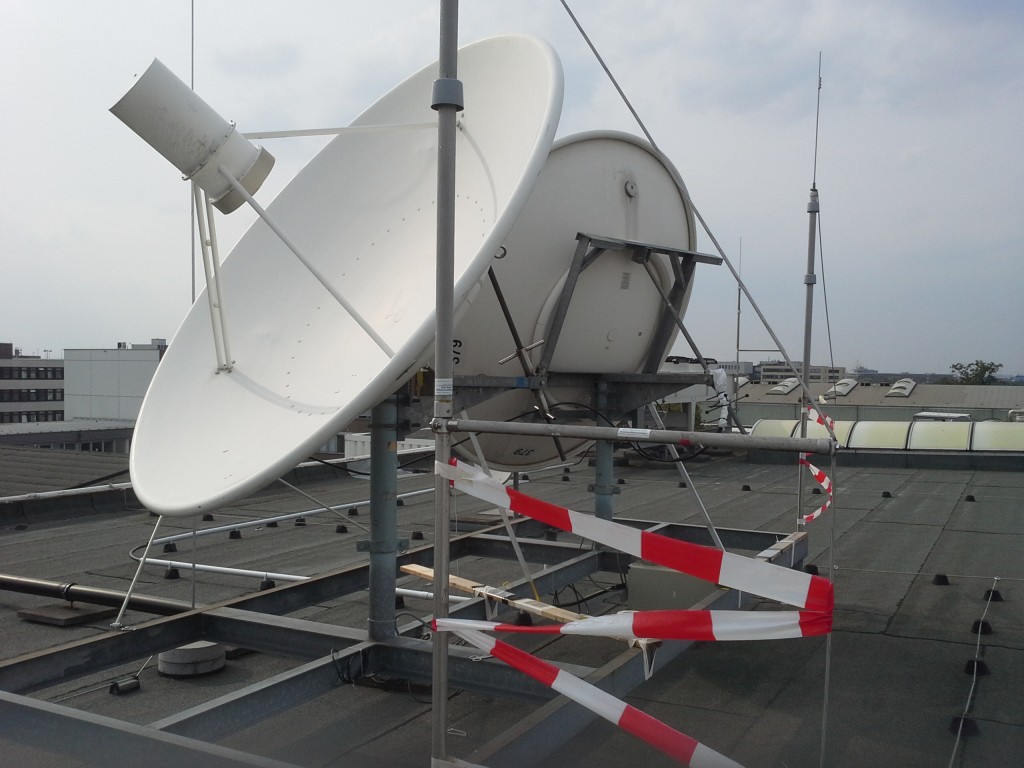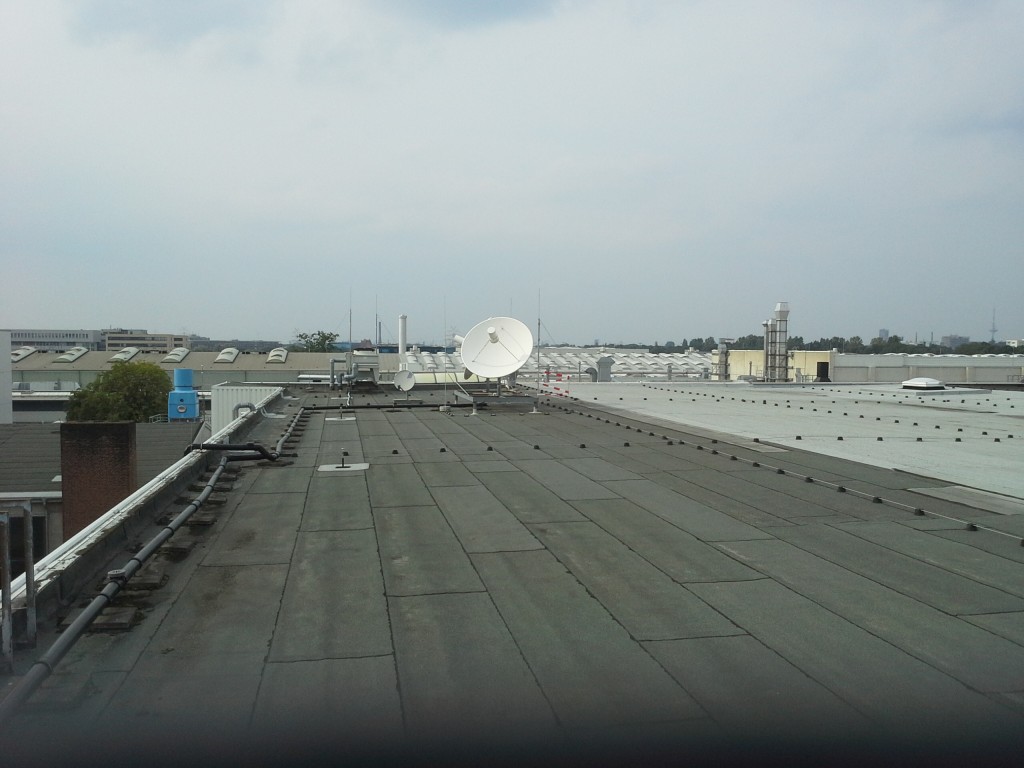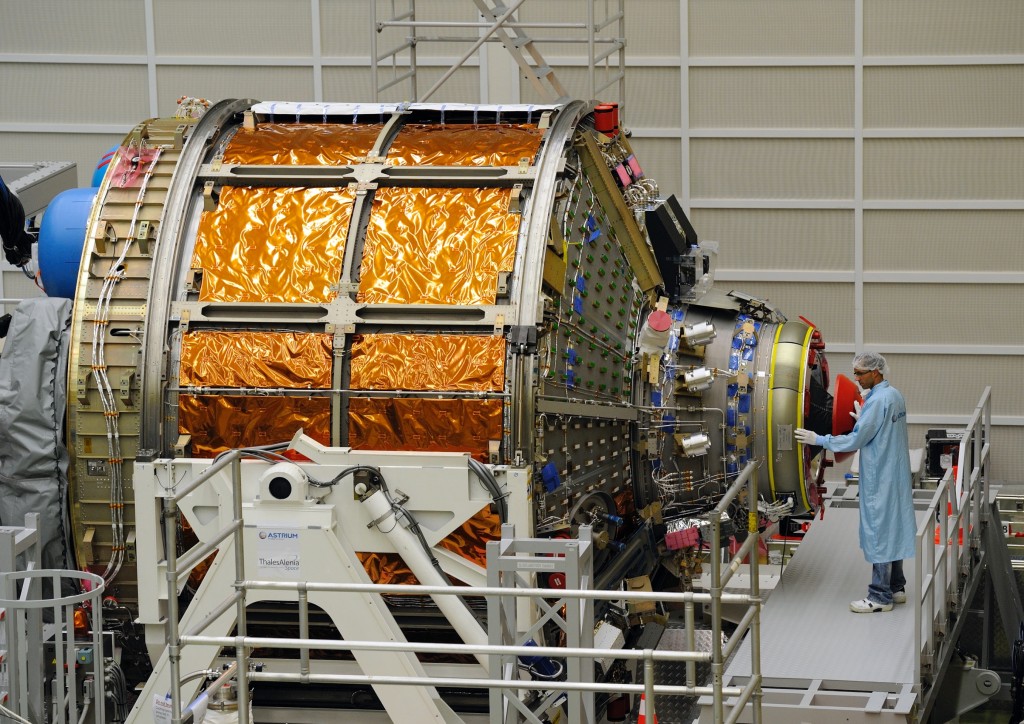The System Validation Test (SVT) for ATV-5 happens today and will mark a significant milestone in the integration and flight readiness for the last ATV, Georges Lemaître.

Photo showing the radio frequency (RF) interface between the test connections (square horns shown at right) and the actual ATV-5 receiving antennas (left). Credit: Astrium
I spoke last week with ESA’s Marcus De Deus Silva, the engineer at ATV-CC responsible for coordinating the test, and he described the complex, behind-the-scenes preparations that go into making this test happen. What’s an SVT, you ask? Simply put, it’s when the actual spacecraft is connected to the actual mission control system, and for the first time, the engineers at ATV-CC get to send telecommands to ‘their’ spacecraft, monitoring the responses and overall telemetry from ATV and making sure the craft is functioning as it should.
While it’s a standard test (all ATVs have undergone SVTs), it’s an especially complex one as it involves connecting the ATV, sitting on its integration test bed at Astrium Bremen, with ATV-CC via the satellites that will handle its communications once in orbit: NASA’s TDRS data relay satellites (a fleet of seven) and ESA’s Artemis relay satellite.
In fact, today, the telecommands sent by the mission controllers at ATV-CC will travel to ATV as follows:
- Console workstation at ATV-CC –>
- IGS Network (ESA/NASA interface) –>
- NASA Houston –>
- White Sands TDRS ground station –>
- Up to TDRS in geostationary orbit –>
- Down to the rooftop antenna on the ATV integration building at Astrium/Bremen –>
- Via cable to the ‘air horn’ radio-frequency interface sitting beside ATV –>
- Across a few centimetres of air into the receiving antenna on ATV –>
- Into the ATV computers
The same connection will also be made using ESA’s Artemis relay satellite instead of TDRS.
Phew!
But the devil is in the details and it’s actually the preparations to ensure everything is coordinated that take a lot of time, effort and skill; as Marcus explained, “If all is properly set up, then the test itself is usually pretty routine.”
At Bremen, the test support team turned ATV on at 06:00 CEST and the test itself was set to begin at 07:00 CEST.
We’ll update this post a bit later with more details on the test and its progress.
Best wishes to everyone at Astrium, ESA, CNES and NASA for a smooth day!

Two parabolic dishes are located on the roof of the ATV integration building at Astrium/Bremen. One is pointed toward NASA’s relay satellite (TDRS6 – located near south America), and one is pointed toward ESA’s Artemis. Credit: Astrium

Two parabolic dishes are located on the roof of the ATV integration building at Astrium/Bremen. One is pointed toward NASA’s relay satellite (TDRS6 – located near south America), and one is pointed toward ESA’s Artemis. Credit: Astrium


 Automated Transfer Vehicle page
Automated Transfer Vehicle page ATV blog archive
ATV blog archive
Discussion: no comments